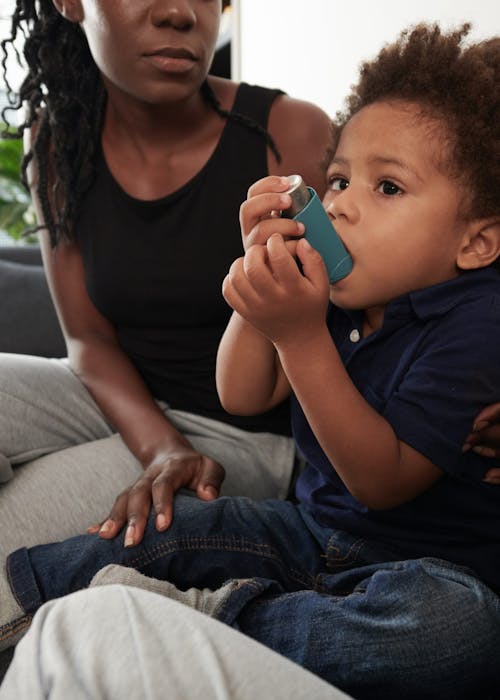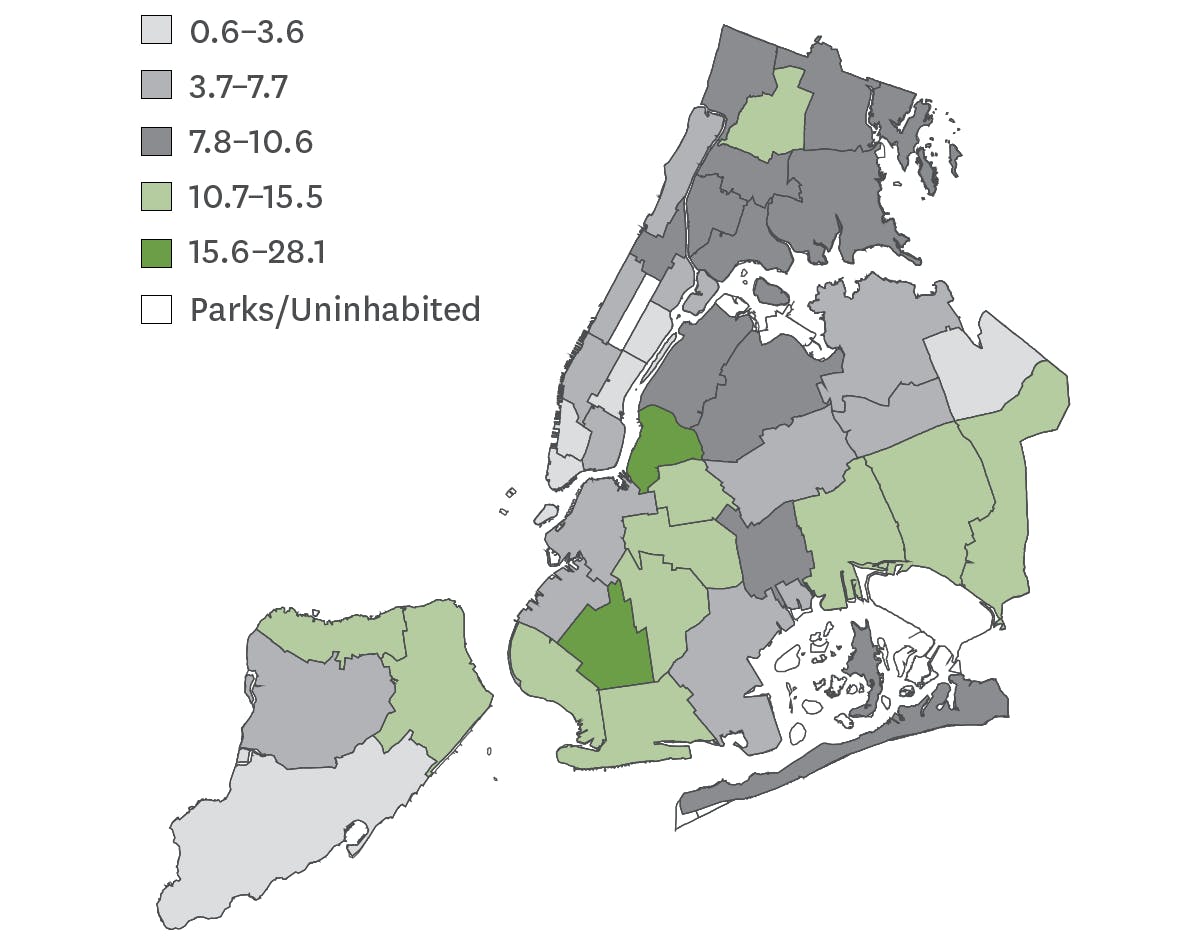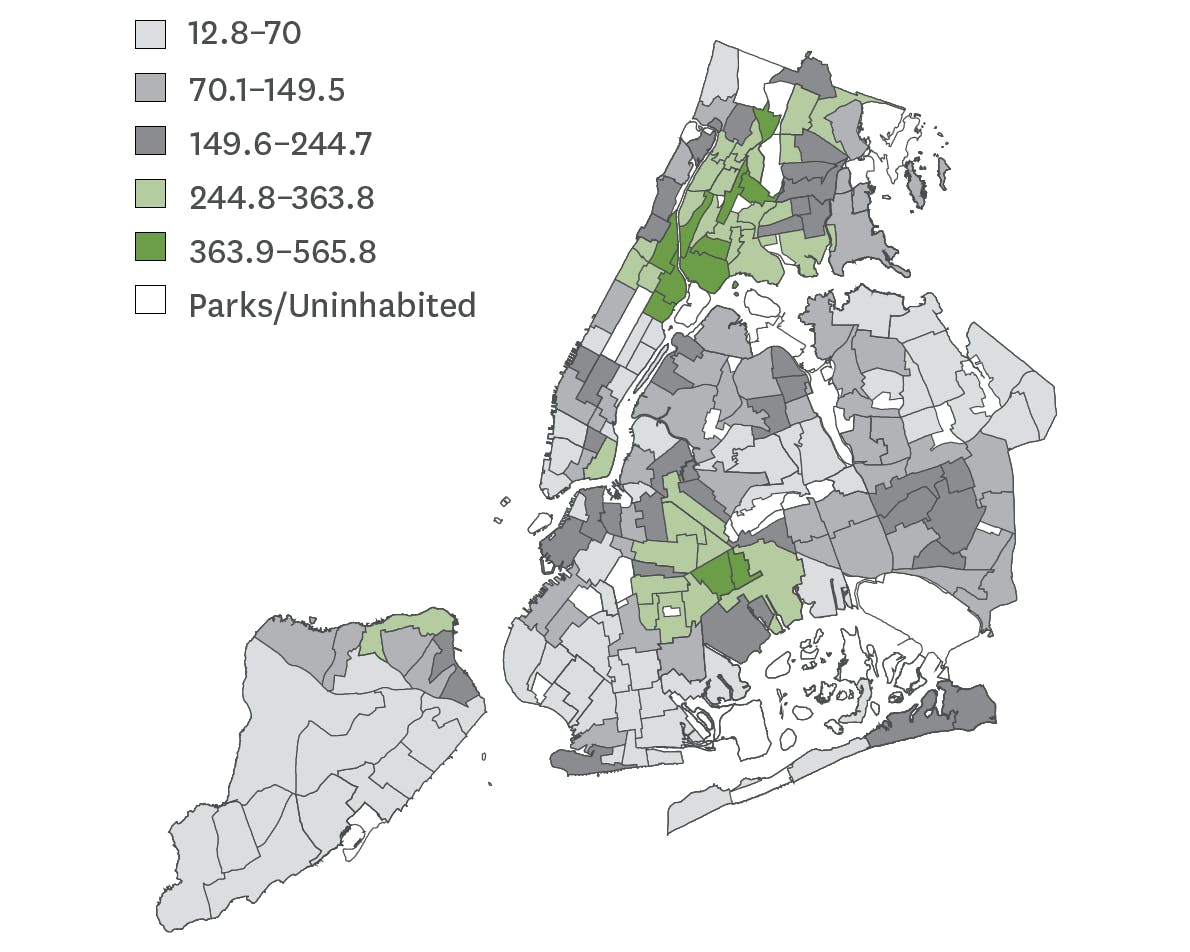

Environmental Justice is Health Equity for Many Children
Insights
April 25, 2023
By: Jenny Veloz & Julie Kronick
As we celebrate another Earth Month this April, we must acknowledge environmental justice work still needed to bolster child health and community equity in our city and state. Environmental justice (EJ) is the right to a safe, healthy, productive, and sustainable environment. Communities that are subjected to a disproportionate burden of environmental hazards and/or experience a significantly reduced quality of life due to their environment are called environmental justice (EJ) communities. These EJ communities are predominantly composed of people of color and/or people living below the poverty line. Here in New York City, low-income communities and Black and Latine children are subject to an array of environmental health issues impacting their health and wellness. The disproportionate impact of environmental hazards on people of color is referred to as environmental racism. For more context on environmental justice and racism, check out this THIRTEEN article about advancing climate justice in NYC.
In NYC, among other neighborhood areas, the South Bronx area and Southeast Queens are examples of EJ communities impacted by environmental racism. EJ communities in NYC continue to be harmed by environmental hazards caused by air pollution, lead poisoning, and lack of green space. There are several data points that illustrate the impact of environmental racism pointing to the need to focus on environmental equity to support child well-being, including several reported in our data book, Keeping Track of New York City’s Children.
Air Quality
From 2017 to 2019, the most recent years of data available, asthma-related emergency department visits in NYC for children ages 5-17 were more than six times higher in very high poverty neighborhoods than in low poverty neighborhoods. Asthma issues are escalated by poor air quality—which can be attributed to factors like proximity to highways, gas and diesel emissions, and other pollutants.
Lead Exposure
Lead exposure is also an issue in NYC. In 2019, 82% of children under the age of six with elevated blood lead levels (EBLL) were Black, Latine or Asian, contributing to their likelihood of developmental delays, weight loss, seizures, and other harmful health effects of lead poisoning. Although rates of children with elevated blood lead levels have gone down with current laws (and since Local Law 1 was passed in 2004), there’s still some serious work to be done to eliminate childhood lead poisoning; and we know that any amount of lead is detrimental to children’s health.
Children Under Six with Elevated BLL (per 1,000 tested) by United Hospital Fund District, 2019

Asthma ED Visits (per 10,000 children 5 to 17) by Neighborhood Tabulation Area, 2017–2019

Green Spaces
In addition to these health risks, too few communities of color have access to safe, clean parks which negatively impacts children’s physical and socio-emotional health. In our Keeping Track Online database, CCC analyses the percentage of residents that potentially live within walking distance to a park. Walking distance to a park is defined as 1/4-mile or less to entrances of smaller sites, such as sitting areas and playgrounds, and 1/2-mile or less to entrances of larger parks. According to our data, which you can view by clicking here, and data from EquityNYC here, areas in the northern Bronx, eastern Queens, and southern Brooklyn have lower percentages of the population located nearby parks. In southeast Queens, only 40% of the population lives in walking distance from a park, compared to every section of Manhattan seeing over 90% of residents within walking distance from a park.
More needs to be done to address environmental racism in New York City communities.
Some policy approaches to environmental justice priorities include electrifying New York City’s school bus fleet; strengthening, enforcing, and closing loopholes in current lead laws; and investing to make parks and green spaces in low-income communities safer and cleaner, which can be done by allocating 1% of the City budget to the Parks Department, ensuring parks are clean, safe, and accessible. Some headway is being made to improve air quality in the city, such as Local Law 120, passed in 2021, which mandates the transition to an all-electric school bus fleet in the city by 2025. Likewise, there is currently a package of lead bills in City Council designed to enhance prevention and enforcement of current lead laws. CCC is part of the NYC Lead Poisoning Prevention Roundtable, focusing on closing loopholes in Local Law 1 and ensuring lead laws are adequately enforced. Check out the 2022 Lead Agenda Roadmap here.
These are just some examples of environmental justice focus areas and potential policies that could go a long way to improving the quality of life of children and families. Just this month, Mayor Adams’ administration unveiled PlaNYC, a wide-ranging citywide agenda with goals to create jobs, fight climate change, and make NYC a cleaner and healthier place to live. Read an article in The City about this plan here. Environmental equity is vital to ensuring not only our health today, but the health of future generations.
Jenny Veloz holds the Environmental Justice and Health policy portfolio at CCC. Marija Drobnjak compiled data reported in the Keeping Track of New York City’s Children, 2022 data book. Bijan Kimiagar contributed feedback to an earlier version of this post.




